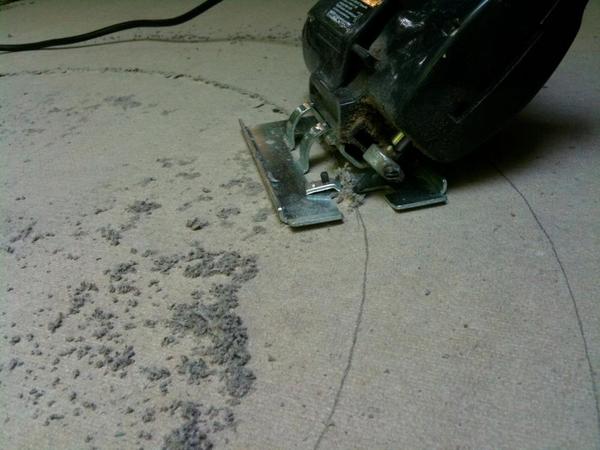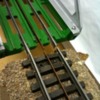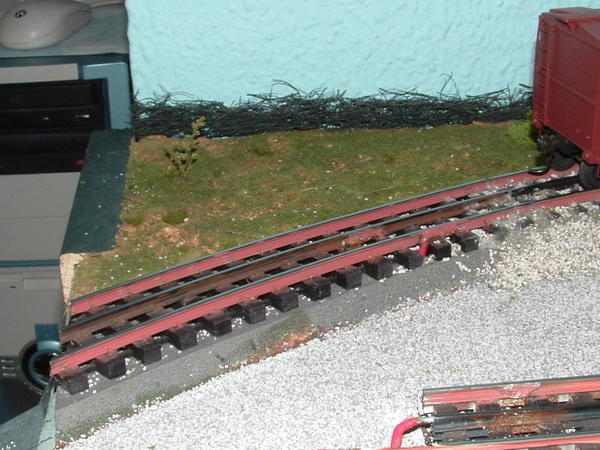Hi, All;
I recently tore-down my old 4.3 x 10' layout and have now built a 12' x 8' folded dogbone. I ballasted the first layout. I use Atlas track. Some of the switches on the old layout started acting up after awhile by not throwing completely, even though there was no ballast under the throw bar. That, and I'm fickle enough that I may not keep this one forever, either, and de-ballasting the track was a royal pain.
Anyway, I see that some folks just paint a gray path under the tracks like the old display layouts. I was thinking of taking this a step further and sprinkling some ballast on the wet paint, but do this before track is installed. Kind of like ballast UNDER the track.
Has anyone else done this? Any issues? Any other suggested methods for achieving some semblance of ballast? Other suggestions?
Thanks;
Carl














